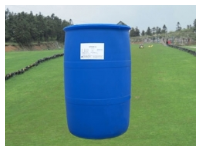In the process of surfactant promoted bioremediation, different types of surfactants will get different remediation results due to their different characteristics, and if the critical micelle concentration is not reached, the surfactant has no solubilization effect. If the concentration is too high, it may inhibit the microbial degradation. Therefore, in the actual remediation of soil, surfactant with good type and concentration should be used.

The application of biosurfactants is often beneficial in the near future. When biosurfactants are selected for bioremediation, new, efficient and low toxic biosurfactants should be developed. Carbon sources similar to the pollution sources should be selected to ferment biosurfactants. Low and effective concentration of biosurfactants should be applied directly to the oil contaminated environment Sex agent producing bacteria or bacterial agents are good choices to improve the repair efficiency. A kind of
Surfactant is suitable for temperature and salinity conditions of oil displacement reservoir, and has high temperature and salt resistance. There are many ways to classify different types of surfactants. The common type is the structure of hydrophilic ionic groups of surfactants in aqueous solution, which can be divided into five types: anions, cations, zwitterions, nonionic and mixed surfactants; according to the molecular weight, they can be divided into low molecular surfactants (molecular weight 300) and high molecular surfactants (molecular weight is 300) According to the requirements of reservoir conditions on surfactant performance of tertiary oil recovery technology, it can be divided into salt tolerant surfactant system, temperature resistant surfactant system, salt and high temperature resistant surfactant system and surfactant system under special formation conditions; according to the source classification, it can be divided into natural surfactant, synthetic surfactant and biosurfactant According to the solubility, surfactants can be divided into water-soluble surfactants and oil-soluble surfactants.